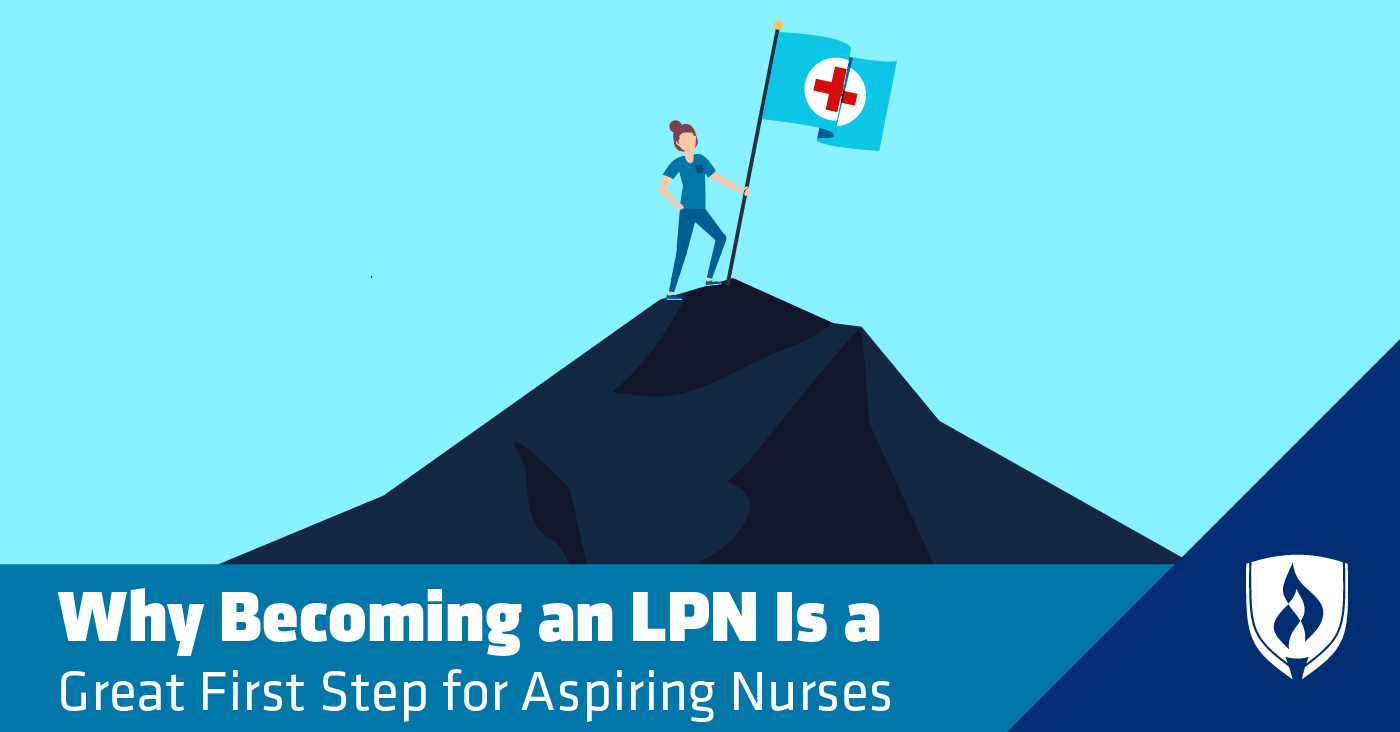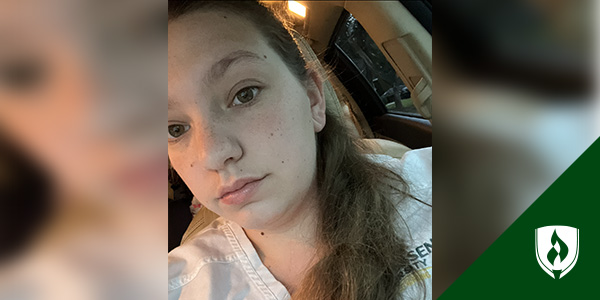Why Becoming an LPN Is a Great First Step for a Nursing Career
By Hannah Meinke on 12/30/2019

There’s plenty drawing you to the nursing field. You’ve read about the need for nurses and know it’s historically been a rock-solid profession—people aren’t going to stop getting sick or hurt any time soon, after all. But at the same time, going to college for nursing is a big step that can be pretty intimidating—particularly if you’ve never been to college.
If you’re considering a career in nursing but are worried about the time, money and academic commitment that comes with becoming a registered nurse, a Practical Nursing Diploma program may be the perfect fit for you. To help explain the benefits of this route, we’ve enlisted Dr. Angela Christian, Dean of Nursing at Rasmussen College and Rasmussen College Nursing Instructor Star Thorson.
But before we get into that, let’s make sure we’re on the same page with what an LPN is and how their role compares to a registered nurse.
What is an LPN?
Also known in some states as a licensed vocational nurse (LVN), a licensed practical nurse is a nurse with a smaller scope of practice than a registered nurse (RN)—but don’t sell them short, their work is still vitally important.
Thorson, who got her start as an LPN, says “LPNs work as important team members in a wide variety of settings [and] bring a specific skill set that is needed across healthcare for a high quality, efficient system.”
LPNs tend to work with relatively stable patients who often are in need of long-term care. Typically they’ll work under the supervision of physicians or registered nurses to care for patients dealing with chronic issues like diabetes, heart disease and Alzheimer’s.
They are often bedside and perform a lot of “practical” care such as assisting patients with bathing, dressing, and feeding. Additionally they are responsible for monitoring patient health, keeping health records, educating patients and families, and administering medical treatments like giving shots, inserting catheters, applying bandages, and—in some states—starting IVs. They work in clinics, hospitals, transitional care units and more.
4 Reasons to make a Practical Nursing diploma your starting line
So why should you consider starting your nursing career as an LPN? We’ve identified a few of the primary draws for pursuing a Practical Nursing diploma.
1. It’s more academically manageable
Nursing school can be a challenging experience—and if you’re not a naturally strong student or it’s been a while since you’ve stepped foot in a classroom, it’s understandable if you’re worried about it. While you’ll still have challenging coursework, starting out on the path of an LPN can be a confidence builder that allows you to get back in the swing of being a student. Christian notes that the Practical Nursing class sizes at Rasmussen College are smaller, and the opportunity for additional individual attention can help students get acclimated.
Thorson can relate to anyone unsure about the choice to attend college. She had wrapped up high school with only a vague idea of what she wanted to do for a career—something where she could help people. But with no college graduates in her immediate family, she definitely felt like she was going out on a limb by enrolling in an LPN program.
“None were opposed to the idea of college but they just didn’t have personal experiences to draw from to help encourage me to go,” Thorson says. “During the first week of school I must have questioned my choice at least a hundred times.”
Despite her apprehension, Thorson stuck with it and has worked her way up the academic ladder to complete a Master of Science in Nursing degree. “After the first week I realized the content was fascinating and fun to learn,” Thorson says. “I have never once looked back with any regret over my career choice.”
2. It can prepare you to advance
Just because LPN programs may be more manageable does not mean they are easy. You will still have to work hard and learn a lot, and that effort builds an excellent foundation for further nursing education, if desired.
“The LPN program that I completed was tough and the instructors had very high standards,” Thorson says. “It set me up well for my future education due to extensive hands-on lab and clinical opportunities.”
"It caused me to fall in love with a profession that is so rich and rewarding."
By the time you’ve completed an LPN program and have passed the NCLEX-PN exam, you will be equipped with the fundamental skills and academic foundation needed for patient care—and that gives you options. You can opt to join the workforce or enroll directly in an LPN to RN “bridge program” that builds on the credits you’ve already earned. Either way, you’ll have the clinical experience of a tested student.
“Ultimately, the LPN experience that I obtained was such a gift to myself and showed me nursing was the profession for me,” Thorson says. “Becoming an RN right after high school wasn’t an option, [but] a one-year commitment to an LPN program was feasible and accessible, and it caused me to fall in love with a profession that is so rich and rewarding.”
3. You can complete it in less time and for less money than a Registered Nursing program
The average Associate’s degree-level registered nursing program lasts 21-33 months depending on how many college credits you already have. For some, that can be an unworkably long time to go without full-time employment. An LPN program, on the other hand, can be completed in as few as 12 months.1 This gives you a quicker path into the nursing workforce—no matter what your ultimate educational end goal is.
“It takes one year to change your life—and I’m not exaggerating here,” Christian says. “I really see students change their life as a result of this program.”
4. Job opportunities and potential employer benefits
As we said earlier—nursing demand in many areas is strong. In fact, the BLS projects an 11 percent growth in employment for LPNs by 2028, which is more than double the average for all occupations.2 The need for nurses is so robust that in many communities, employers are struggling to fill nursing positions. While that might not be a great thing for the public at large, a tight labor market can be a positive for you as employers may take extra steps to attract talent.
While it’s certainly not a given, Thorson says that you may be able to find employers willing to offer sign-on bonuses or benefits packages that can help ease some of the financial burden of education. And if you have your mind set on someday becoming a registered nurse, employers may be willing to help with some of the costs associated with furthering your education.
Start small and dream big
You don’t have to feel trapped in the job you have or out of reach from the job you want. There is more than one way to be a nurse and more than one way to become a nurse. So is a Practical Nursing diploma the right path for you? Would you fit in as a Nursing student?
“In my opinion, the ideal candidate is anyone who is passionate about helping others, great at communication, dependable, and willing to work hard and learn an immense amount of information and skills to contribute to safe patient care,” Thorson says. “That’s it! If you can check each of those boxes, you can become an LPN and enter the nursing profession.”
Want to learn more about this career path? Check out our article, “4 False Assumptions About an LPN Career.”
1Completion time is dependent on the number of transfer credits accepted and the number of courses completed each term.
2Bureau of Labor Statistics, U.S. Department of Labor, Occupational Outlook Handbook, [accessed November, 2019] www.bls.gov/ooh/. Information represents national, averaged data for the occupations listed and includes workers at all levels of education and experience. Employment conditions in your area may vary.




